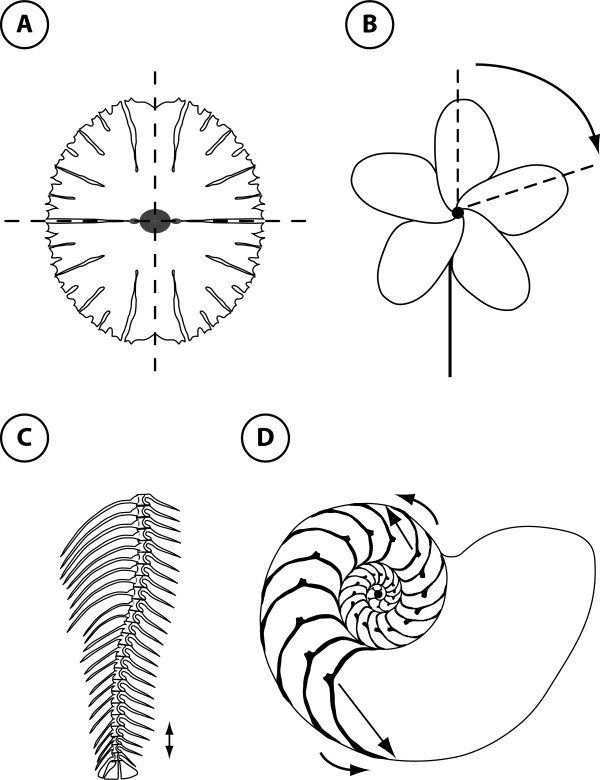Figure 1.
Some types of symmetry found in the structure of living organisms. A. An alga (Micrasterias rotata) with two perpendicular axes of reflection symmetry (dashed lines; biradial symmetry or disymmetry). B. A flower, (Plumeria alba) that shows rotational symmetry (the axis of rotation is shown by the black dot at the centre of the flower and the angle of rotation is represented by the curved arrow). C. The arrangement of vertebrae of a zebrafish exhibits translational symmetry (the translation is indicated by the double-headed arrow). D. A cross-section of a nautilus shell (Nautilus pompilius) showing scale symmetry that is a combination of rotations, translations and dilations (the centre of rotation is represented by the black dot, the rotation by the curved arrow, and the translation by the straight arrow).

